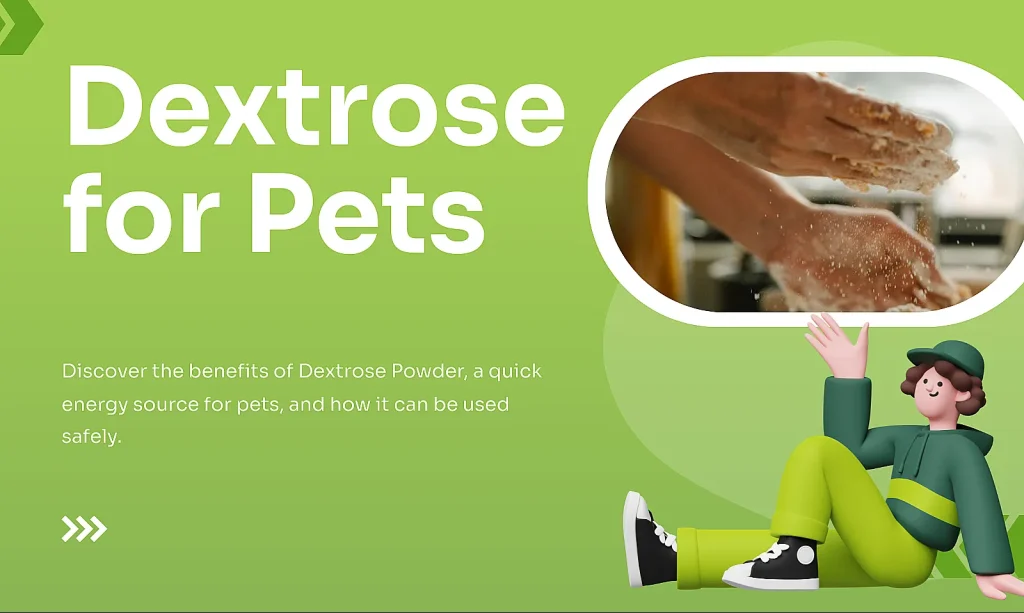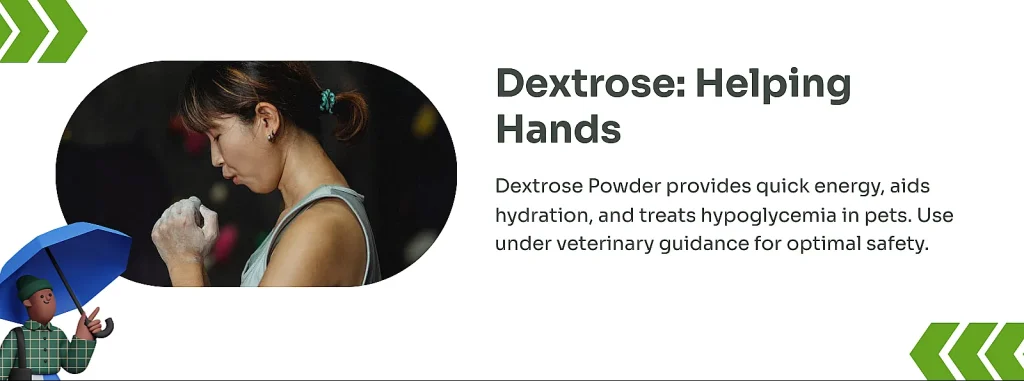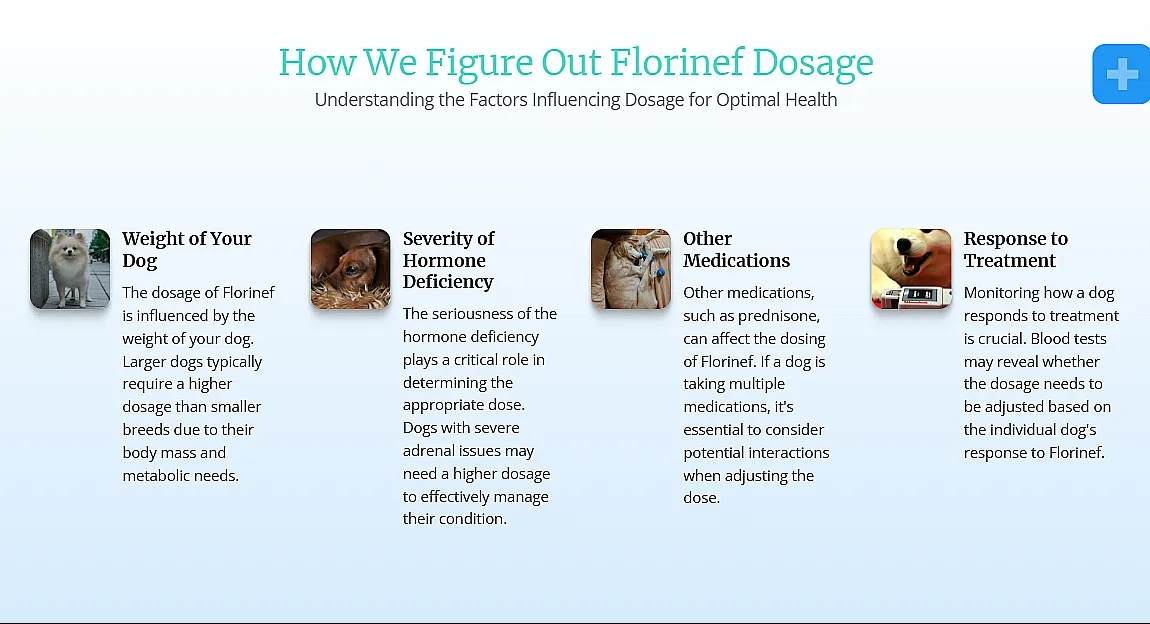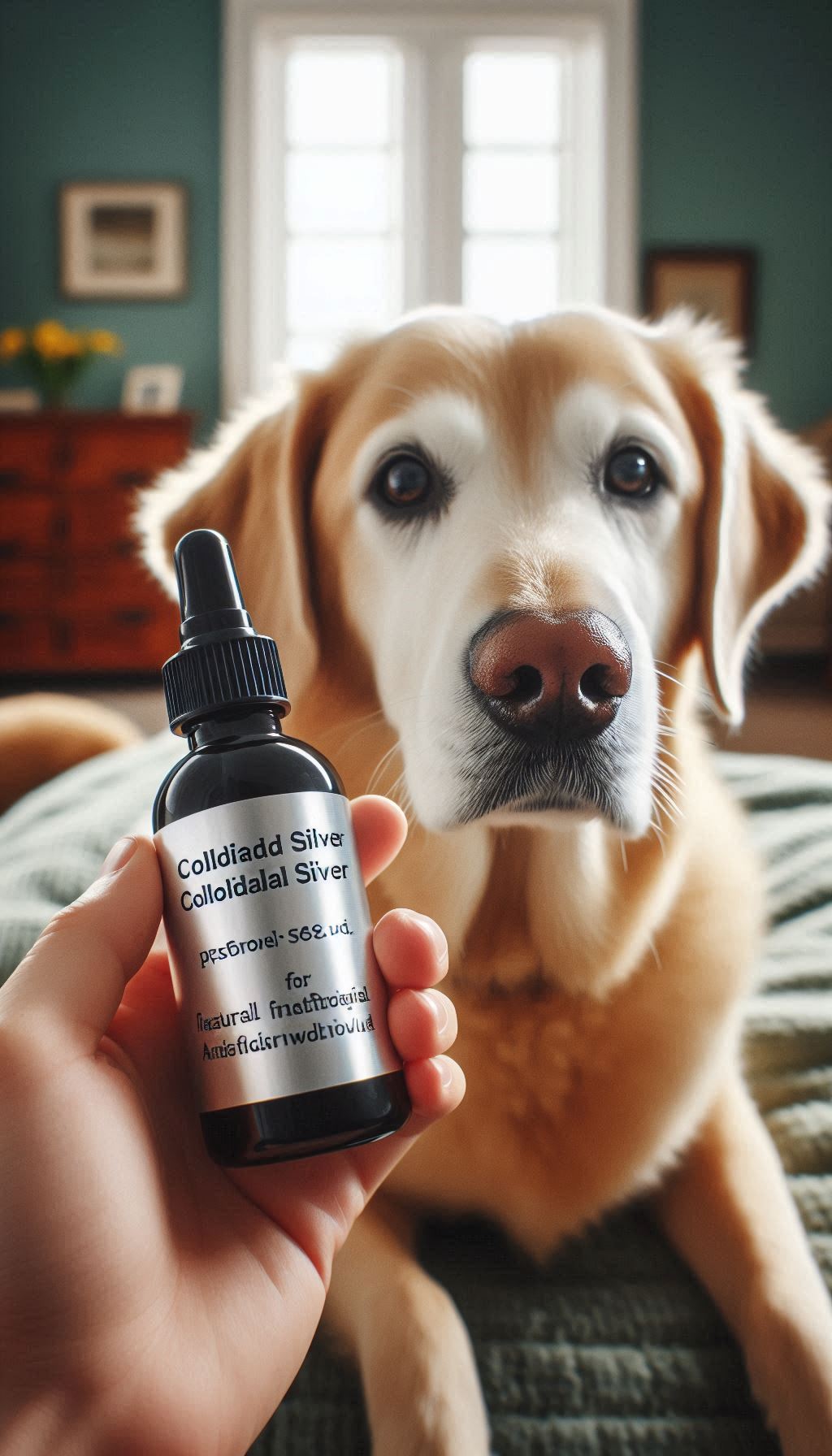Understanding Dextrose Powder for Pets
Dextrose powder is commonly used in veterinary medicine to provide a quick source of energy for pets, especi
ally in emergency situations. It is a form of glucose, which is the primary fuel source for cells in the body. Dextrose powder can be easily dissolved in water to create a solution that can be administered orally to pets. It is commonly used to treat hypoglycemia and dehydration in animals. Pets may require dextrose powder in certain situations, such as after surgery or during illness, to help support their energy levels and overall health.

What is Dextrose Powder and its benefits for pets
Dextrose powder is a form of glucose that provides quick energy for pets. It can be dissolved in water and given orally to help pets with low blood sugar or dehydration. Dextrose powder is often used in emergency situations or after surgery to support your pet’s energy levels. Its benefits include providing a readily available fuel source for cells and helping to restore hydration. It is safe to use and can be a lifesaving therapy when administered appropriately.
Safe dosage and administration of Dextrose Powder to pets

Safe dosage and administration of Dextrose Powder to pets: When administering Dextrose Powder to your furry family member, it is crucial to follow the recommended dosage guidelines provided by your veterinarian. Start with small amounts and gradually increase as needed. Dextrose Powder can be dissolved in water and given orally to help pets with low blood sugar or dehydration. Always ensure your pet drinks water after consuming Dextrose Powder to prevent any potential issues. If you have any concerns or questions about the dosage or administration process, consult your veterinarian for guidance and assistance.
Risks and Precautions with Dextrose Powder

Potential side effects of Dextrose Powder for pets
Using Dextrose Powder for your furry family member comes with potential side effects to be aware of. Some pets may experience gastrointestinal upset, such as vomiting or diarrhea, when first starting Dextrose Powder. These side effects are usually mild and resolve on their own, but it is important to monitor your pet closely. If these side effects persist or worsen, contact your veterinarian for further guidance.
Potential side effects of Dextrose Powder for pets
Some pets may experience gastrointestinal upset, such as vomiting or diarrhea, when first starting Dextrose Powder. These side effects are usually mild and resolve on their own, but it is important to monitor your pet closely. If these side effects persist or worsen, contact your veterinarian for further guidance. Remember, your pet’s well-being is our top priority, and we are here to help you navigate any concerns or issues that may arise during their Dextrose Powder treatment.
Precautions to take while using Dextrose Powder
1. Consult with your veterinarian: Before starting any new medication or treatment for your pet, it’s crucial to consult with a veterinarian. They will be able to assess your pet’s specific needs and determine if dextrose powder is the right option for them. They can also provide guidance on the appropriate dosage and administration methods.
2. Monitor blood sugar levels: Regularly monitor your pet’s blood sugar levels while using dextrose powder. This will help ensure that their blood sugar remains within a safe range and prevent any complications. If you notice any signs of hypoglycemia or hyperglycemia, such as weakness, confusion, or excessive thirst, contact your veterinarian immediately.
3. Store dextrose powder properly: Dextrose powder should be stored in a cool, dry place away from direct sunlight. Be sure to follow the storage instructions provided by the manufacturer. Additionally, keep dextrose powder out of reach of children and other pets to prevent accidental ingestion.
Choosing the Right Dextrose Powder for Your Pet

Factors to consider when selecting Dextrose Powder for pets
When choosing the right dextrose powder for your pet, consider their specific health needs. Talk to your veterinarian to determine if a particular brand or formulation is suitable for your pet’s condition. Look for high-quality, pharmaceutical-grade dextrose powder to ensure purity and safety. Check the expiration date to ensure the product is still potent. If your pet has any allergies or sensitivities, make sure to read the ingredients list carefully.
Factors to consider when selecting Dextrose Powder for pets
When selecting Dextrose Powder for your pet, there are several factors to consider. Firstly, it is essential to talk to your veterinarian to determine if a specific brand or formulation is suitable for your pet’s condition. Secondly, ensure that the dextrose powder is of high quality and is pharmaceutical-grade to guarantee purity and safety for your furry family member. Lastly, checking the expiration date is crucial to ensure the product’s potency and efficacy. It is always best to prioritize your pet’s health by selecting the appropriate dextrose powder under professional guidance.
Best practices for purchasing high-quality Dextrose Powder

When purchasing high-quality Dextrose Powder for your pet, it is essential to follow a few best practices. Firstly, look for a reputable and trusted brand that specializes in veterinary products. This ensures that the dextrose powder meets the necessary quality standards. Secondly, check the ingredients list to ensure that the product contains pure dextrose without any additives or fillers. Lastly, read customer reviews and seek recommendations from your veterinarian or other pet owners who have used dextrose powder before. This will help you make an informed decision and ensure that you are purchasing a reliable product.
Administration Methods of Dextrose Powder
Different ways to administer Dextrose Powder to pets
When it comes to administering Dextrose Powder to your furry family member, there are several methods you can choose from. One common method is mixing the powder with water, creating a dextrose solution that can be given orally using a syringe or dropper. Another option is to sprinkle the powder over your pet’s food, ensuring they consume it along with their meal. For pets who are uncooperative with oral administration, mixing the powder into a paste or gel and applying it to their gums can be effective.

Remember to consult with your veterinarian to determine the best method for your pet’s specific needs and condition.
Different ways to administer Dextrose Powder to pets
One common method is mixing the powder with water, creating a dextrose solution that can be given orally using a syringe or dropper. Another option is to sprinkle the powder over your pet’s food, ensuring they consume it along with their meal. For pets who are uncooperative with oral administration, mixing the powder into a paste or gel and applying it to their gums can be effective. Remember to consult with your veterinarian to determine the best method for your pet’s specific needs and condition.
Tips for effectively giving Dextrose Powder to your furry family member

When administering Dextrose Powder to your furry family member, start by mixing the powder with a small amount of water to create a dextrose solution. Ensure that the powder dissolves completely. Next, use a syringe or dropper to slowly and gently administer the solution into your pet’s mouth. Place the syringe or dropper between the cheek and gums, aiming towards the back of their throat. Finally, reward your pet with praise or a small treat to help them associate the experience with positivity.
Monitoring and Managing Dextrose Powder Usage
When it comes to using Dextrose Powder for your furry family member, regular monitoring and careful management are essential. Keep a close eye on your pet’s behavior, energy levels, and blood sugar levels. If you notice any unusual signs or symptoms such as excessive thirst, frequent urination, or lethargy, it’s important to consult with your veterinarian. They can provide guidance on how to properly manage your pet’s Dextrose Powder usage and make any necessary adjustments to ensure their safety and well-being. Remember, the goal is to maintain their blood sugar levels within a healthy range.
Signs to watch for when using Dextrose Powder for pets
When using Dextrose Powder for your pet, it is important to be vigilant and watch for any possible signs of concern. Keep an eye out for excessive thirst, as this may indicate an imbalance in blood sugar levels. Frequent urination can also be a red flag, as it may suggest that the pet’s body is trying to eliminate excess glucose. Lethargy or a noticeable decrease in energy levels should not be ignored, as it could be a sign that the Dextrose Powder dosage needs adjustment. Remember to consult with your veterinarian for guidance and to ensure your pet’s well-being.
How to monitor and adjust Dextrose Powder intake for optimal safety
- Monitor blood sugar levels: Regularly check your pet’s blood sugar levels to ensure they are within the normal range. This can be done using a glucometer or with the guidance of your veterinarian. High or low blood sugar levels may indicate that the dosage of Dextrose Powder needs adjustment.
- Observe behavior and energy levels: Pay attention to any changes in your pet’s behavior or energy levels. Lethargy or excessive thirst may be signs that the Dextrose Powder intake needs to be adjusted. Frequent urination can also indicate an imbalance in blood sugar levels.
- Consult with your veterinarian: It is crucial to consult with your veterinarian throughout the monitoring process. They can provide guidance on how to effectively monitor and adjust Dextrose Powder intake for your pet’s optimal safety. Regular check-ups will help ensure that the Dextrose Powder treatment is working effectively and that any necessary adjustments are made.
Conclusion
Summary of the safest practices for using Dextrose Powder for pets
Dextrose Powder can be a safe and effective option for managing low blood sugar levels in pets. It is important to carefully monitor your pet’s blood sugar levels, observe any changes in behavior or energy levels, and consult with your veterinarian throughout the process. By following these guidelines and taking precautions, you can ensure the optimal safety and well-being of your furry family member. Remember, always consult with your veterinarian before starting any new treatment for your pet.
Summary of the safest practices for using Dextrose Powder for pets
Monitoring your pet’s blood sugar levels is crucial when using Dextrose Powder. Regularly check and document the levels to ensure they are within the target range. Observe any changes in behavior or energy levels, as this can indicate the need for adjusting the dosage.
Consult with your veterinarian throughout the process to discuss your pet’s specific condition and determine the appropriate dosage. They can provide guidance on how to safely administer Dextrose Powder and any necessary precautions.
Remember, always follow your veterinarian’s instructions and seek immediate medical attention if you notice any severe side effects or complications. Your pet’s health and well-being should always be the top priority.
Common misconceptions and final recommendations for pet owners
Common misconceptions and final recommendations for pet owners
Misconception 1: Some pet owners may mistakenly believe that dextrose powder is a substitute for proper veterinary care. However, it is important to remember that dextrose powder is not a cure-all solution and should only be used as directed by a veterinarian.
Misconception 2: Another misconception is that dextrose powder can be given in large amounts without any adverse effects. This is not true. Overdosing on dextrose powder can lead to hyperglycemia and other complications, so it is essential to carefully monitor your pet’s blood sugar levels and follow your veterinarian’s dosage instructions.
Final Recommendation: To ensure your pet’s safety and well-being when using dextrose powder, it is crucial to seek professional guidance. Consult with your veterinarian, who can provide specific dosing instructions based on your pet’s individual needs. Regularly monitor your pet’s blood sugar levels and be vigilant for any changes in behavior or energy levels. Remember to always prioritize your pet’s health and follow your veterinarian’s recommendations for the safest use of dextrose powder.










